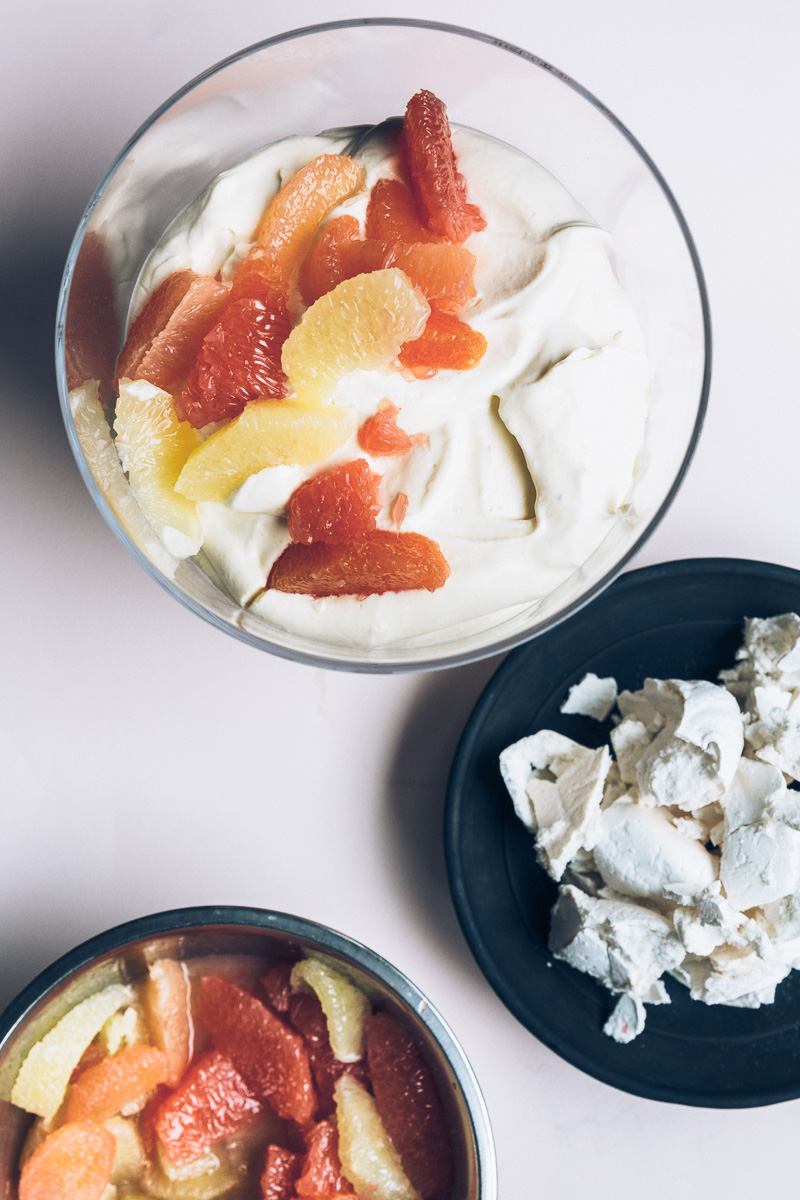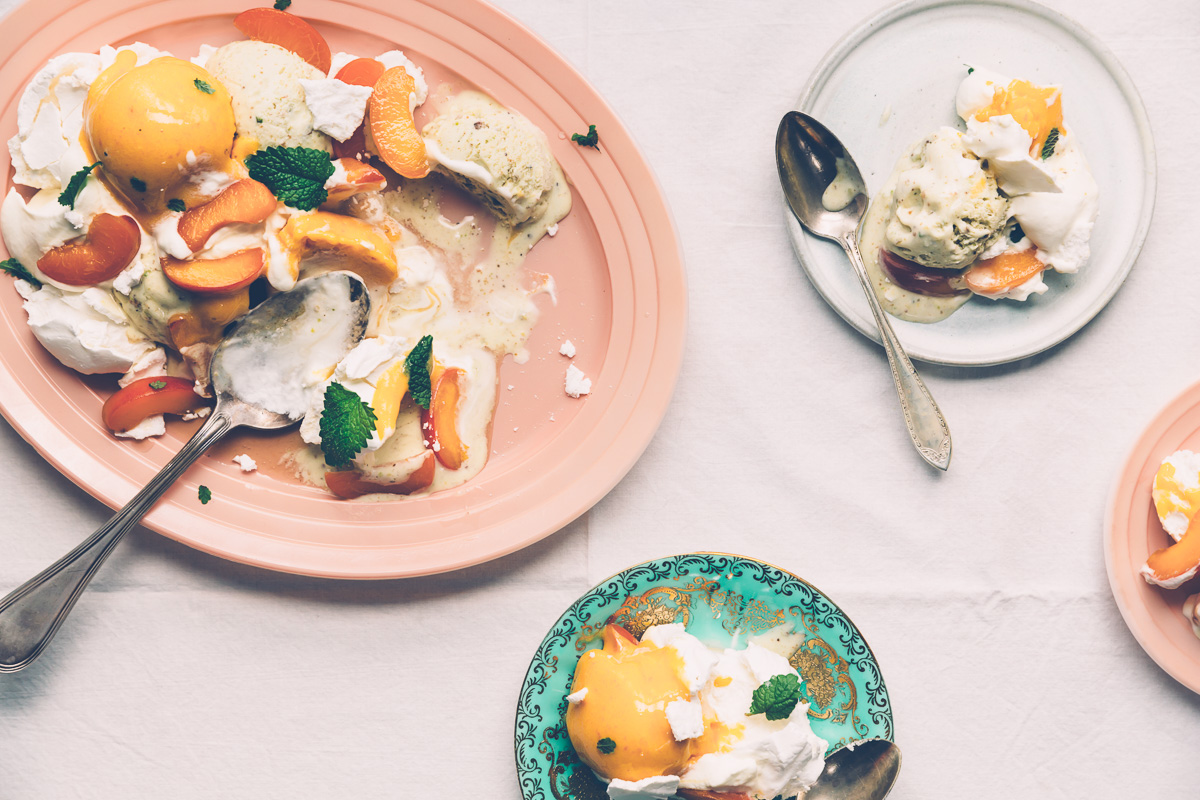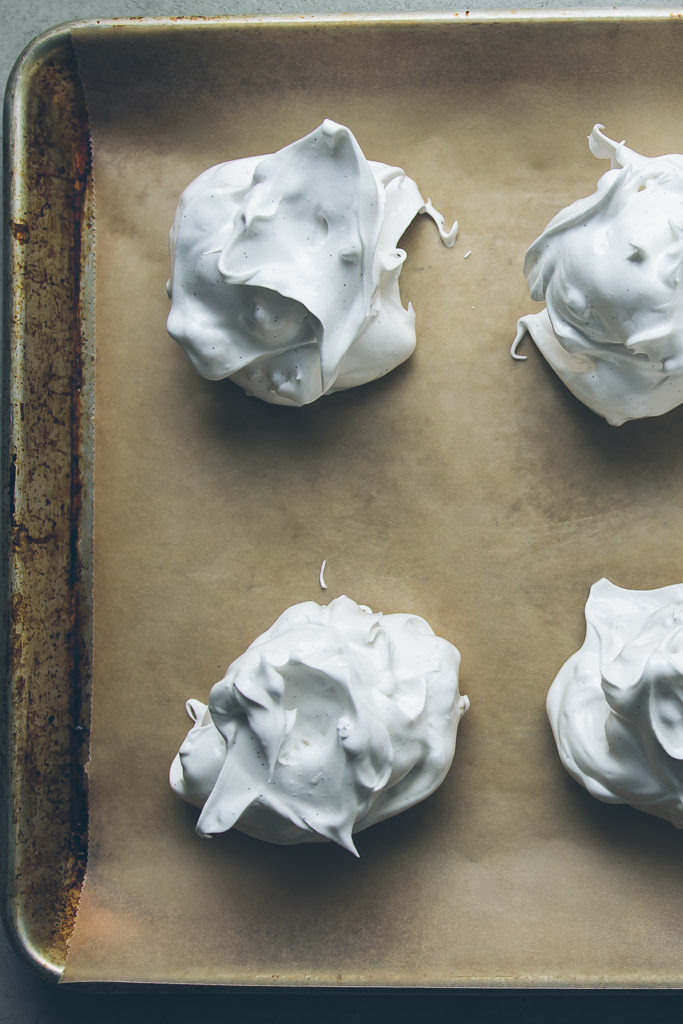In the dreary days of February, my mind turns to spring dreams. Green grass and tiny daffodils elbowing their way up through the soil. The season's first asparagus stalks and baby morels. Raspberries. Strawberries. Apricots! Easter hams and rhubarb pies.
All of which leaves me feeling rather let down when I come back down to Earth and remember we’re still sailing through the mid-winter doldrums.
This is a time of year that requires extra creativity in the kitchen. The novelty of autumn’s bounty of apples, pears and squash is long gone. Tender spring things are still weeks away. And Kale, popular and Instagram-friendly as it is, can only take you so far.
Luckily, this is the month we are given citrus.
Jewel-toned citrus in all its shapes and forms is the answer to the culinary blues. Bright and subtly floral, it’s the winter ingredient that tricks our palettes into thinking spring is nearly here.
Sweet-tart grapefruit is my very favorite member of the citrus family. It's annual appearance at the grocery store never fails to brighten my day. Sort of like a beloved uncle who comes around once a year with bad jokes and pocketfulls of candy.
It’s difficult to improve upon a perfectly ripe grapefruit section scooped straight from the rind. But as I looked around our kitchen at the mounting piles of grapefruit, I decided it was time to kick things up a notch and transform my winter citrus bounty into something a touch more fancified.
Which leads us to this Grapefruit Vanilla Bean Trifle. It’s a delicious pile of controlled chaos--towering layers of cake, cream, meringue and citrus that collapse into a fluffy, creamy mess when you scoop them into your bowl. This is the sort of dessert that will help you shake off a winter funk. The sort of dish that will make you forget winter all together.
At least until you reach the bottom of the trifle dish.
Grapefruit Vanilla Bean Trifle
- 5 large, ripe grapefruit (I used a mix of red, pink, gold and white grapefruit)
- 3 cups heavy cream
- 2 tablespoons sugar
- 1 recipe Grapefruit Curd, chilled (see below)
- 1 recipe Vanilla Bean Meringues (see below)
- 1 recipe Grapefruit Olive Oil Cake, cooled completely (see below)
*Note: This trifle is most beautiful right after you assemble it, before the citrus can release any juices. But it is about a gazillion times more delicious the next day. I recommend you make this a day in advance and store it covered in the fridge until you’re ready to serve it. Leave off the last layer of meringue crumbles until right before you serve it so they stay crunchy.
- Almost all the components of this trifle can be made in advance. The cake can be baked up to 2 days in advance. The curd can be made up to a week in advance. The merengues can be baked a week or more in advance if you bake them fairly dry and store them in an airtight container.
Remove the skin and pith from the grapefruit. Cut the flesh into supremes over a medium bowl so you catch all the juices. (Here’s a video on how to do it.) Set aside.
Place the cream in the bowl of a stand mixer along with the sugar and beat to stiff peaks using the whisk attachment. (You can also use a hand beater or a wire whisk and a mixing bowl.) Take care not to over beat the cream--you want it stiff, but not grainy. Gently fold the chilled grapefruit curd into the whipped cream until only a few faint streaks of yellow remain.
Cut the cooled cake into roughly 1-inch pieces. Arrange the cake pieces in the bottom of a trifle dish or large bowl in a tight layer. Depending on the size of your dish, you may not use all the cake pieces. You can freeze them for another use, or--my favorite option--snack on them alongside your afternoon cup of coffee or tea.
Spread half the grapefruit cream mixture over the cake. Arrange half the grapefruit sections over the cream. (Take care to lift them from their juices with your fingers or a slotted spoon so the trifle isn’t too wet.) Crumble a layer of meringue pieces over the grapefruit. Spread the rest of the grapefruit cream over the meringue and top with the rest of the grapefruit sections. Crumble additional pieces of meringue over the trifle just before serving.
Serves 8-10.
Grapefruit Curd
1 tablespoon plus 1 teaspoon finely grated grapefruit zest (from 1 large grapefruit--grate an additional 2 teaspoons zest for the olive oil cake, below)
¾ cup freshly-squeezed grapefruit juice
¼ cup plus 1 tablespoon freshly-squeezed lemon juice
1 cup sugar
5 large eggs
4 large yolks (save the yolks from your meringues for this)
Pinch kosher salt
10 tablespoons unsalted butter, cut into 10 pieces
Set a fine mesh sieve over a medium bowl and set aside.
Place the juices, zest, sugar, eggs and salt in a medium heavy saucepan. Whisk well to combine. Cook over medium-low heat, stirring often with a heatproof spatula, until just warm to the touch. Add 1 piece of the butter and cook, stirring constantly with the spatula to prevent scorching, until the butter is almost melted. Repeat with the remaining 9 pieces of butter.
Continue to cook, stirring often until the curd has thickened and is beginning to bubble, about 1 minute longer.
Strain the curd into the bowl and discard the zest and any bits of cooked egg. Cool for 15 minutes then place a sheet of plastic wrap directly on the surface of the curd (to prevent a skin from forming) and chill in the refrigerator until very cold, at least 4 hours.
The curd will keep, covered, in the refrigerator for a week or frozen for up to 3 months. Defrost in the refrigerator before serving.
Makes about 3 cups.
Vanilla Bean Meringues
9 oz superfine sugar (about 1 cup plus 2 tablespoons)
1 vanilla bean (I used a Tahitian vanilla bean since they are beautifully floral)
1 1/2 tablespoons cornstarch
Pinch salt
6 oz egg whites (from about 5 large eggs)--reserve the yolks for curd
2 teaspoons white wine vinegar
Place a rack in the middle of the oven and preheat to 250° F. Line a rimmed sheet pan with parchment paper.
Place the sugar in a small bowl. Split the vanilla bean lengthwise and scrape out the seeds with a paring knife. Add the vanilla seeds to the bowl with the sugar. Using your fingers, rub the seeds into the sugar; this will keep the vanilla from clumping together in the meringues. Add the cornstarch and salt. Whisk to combine and break up any clumps.
Using a stand mixer fitted with the whisk attachment, whip the egg whites at medium speed until soft peaks form, 2-3 minutes.
Increase the speed a little and slowly sprinkle in the sugar mixture. It should take you about a minute or more; adding the sugar too quickly or before the eggs form soft peaks will result in a less stable meringue that might spread or weep. A minute or so after all of the sugar mixture has been added, add the vinegar. Increase the speed to medium-high and continue to whip until the meringue forms very stiff peaks, 5-8 minutes longer. You will know the meringue is stiff enough when it will hold the whisk attachment perfectly upright with no other support.
Spoon the meringue into 6 heaping mounds, each about 4 inches wide on the parchment-lined sheet pan (be sure they aren’t touching). If you want drier, crunchier meringues, use the back of a spoon to flatten each meringue a bit so they are thinner. If you like more marshmallowy meringues, leave them as fluffy mounds.
Bake the meringues until they are crisp and dry to the touch on the outside but still white (not golden or cracked), about 80-90 minutes for flat meringues and about 2 hours for thick ones. Check on the meringues periodically to make sure they aren’t coloring or cracking. If they are, rotate the sheet pan and reduce the oven temperature by 25 degrees.
When the meringues are done, turn off the oven and let the meringues cool completely in the oven. If you're not using them right away, store the cooled meringues in a tightly sealed container (I like a large mason jar). They will keep for a week or two, depending on how dry they are cooked, in a well-sealed container.
Makes 6 large meringues.
Grapefruit Olive Oil Cake
Adapted slightly from Yossy Arefi
1 cup (200g) sugar
1 3/4 cups (225g) all-purpose flour
1 teaspoon baking powder
1/2 teaspoon baking soda
1/2 teaspoon salt
3/4 cup (175ml) fruity olive oil
1/4 cup (55g) unsalted butter, melted and cooled
1 tablespoon finely grated grapefruit zest
4 large eggs, at room temperature
1 cup (240ml) whole-milk kefir or buttermilk, at room temperature (I used kefir)
Follow this recipe, omitting the rosemary and substituting 1 tablespoon finely grated grapefruit zest for the lemon zest.































